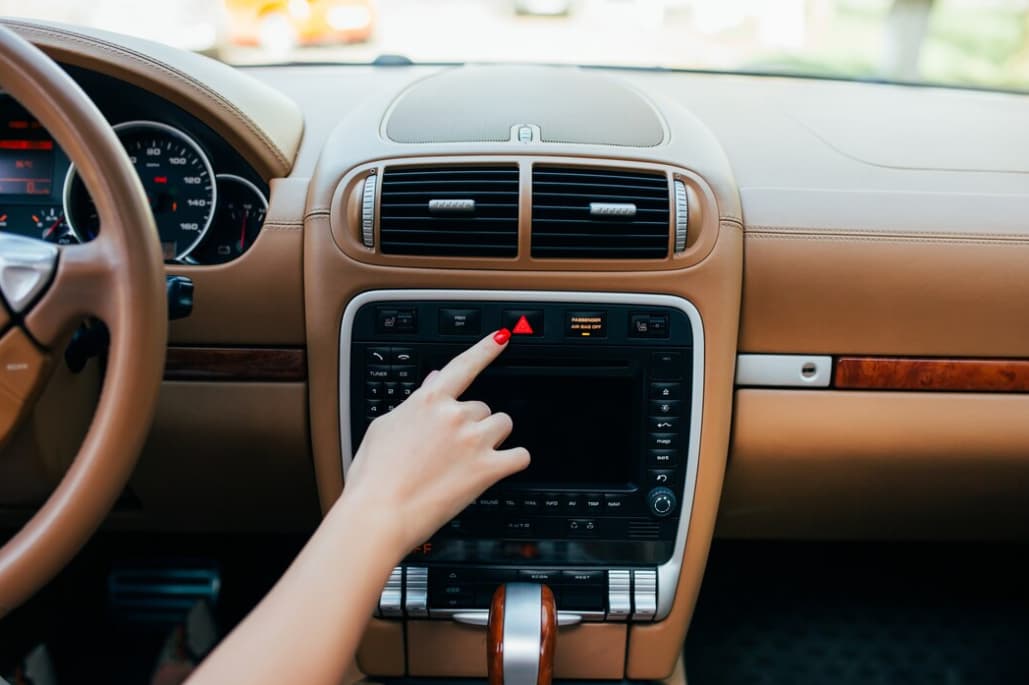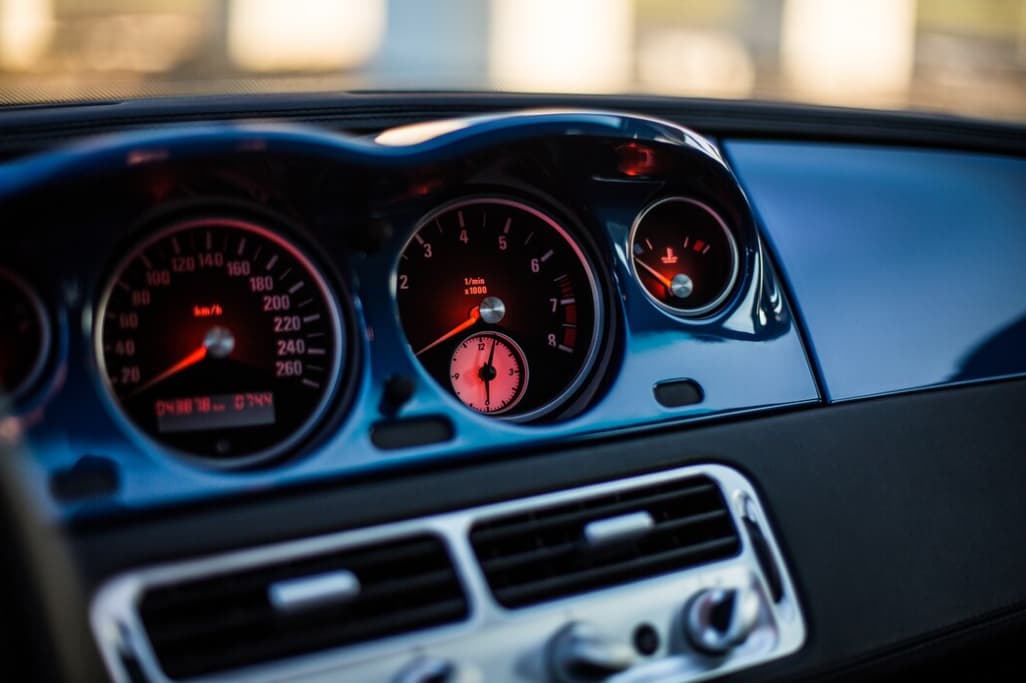Symbols and Manufacturing Processes of Car Dashboards
The vehicle’s interior is incomplete without its integral component, the car dashboard. Not only does it contribute to the car’s aesthetics, but it also plays a crucial role in enhancing performance. Comprising an array of symbols, signs, and warning lights, a standard dashboard offers the driver essential information about the car’s overall functions. This article delves into the specifics of car dashboard symbols and sheds light on the intricate manufacturing process behind them. The practical innovations in car dashboard design offer insights into the broader field of conceptual car design, highlighting a focus on user experience and functionality.
What is a Car Dashboard?
The car dashboard, also known as the dash or the vehicle’s instrument panel, functions as the control hub of an automobile. Positioned in front of the driver, it acts as a barrier between the driver and the car’s front, alongside the windshield. A standard car dashboard showcases electronic signs, caution indicators, and various symbols to provide essential information.
The functionalities of the dashboard are contingent upon the type and brand of the car. There is variability in the features and sophistication of the dashboard and its signs based on these factors. Nevertheless, irrespective of the car type, all dashboards present an array of gauges, including those for fuel level, speedometer, turn indicators, and more. More advanced models may incorporate additional features such as climate control, an entertainment system, engine coolant temperature gauge, gear shift positions, dashboard warning lights, engine check lights, and various other indications.
Vehicle Dashboard Indicators and Their Varied Significations
The array of lights on a vehicle’s dashboard serves as an essential communication tool, providing a wide range of information about the car’s status and operation. These indicators are not solely for warnings; they also inform about the activation of different features, like the use of turn signals or the engagement of cruise control. Additionally, they alert the driver to various vehicle conditions – some may pertain to comfort and convenience features, while others highlight critical mechanical or safety issues.
| Light Color | Meaning |
|---|---|
| Green/Blue | Indicates an active or operating system in your vehicle. |
| Yellow | Urgent attention required; your car needs repair or servicing soon. |
| Red | Immediate action necessary; do not operate the car without addressing the issue. Some lights are safety warnings (e.g., seat belt reminders), while others indicate critical mechanical problems like engine overheating. If a mechanical light appears, cease driving immediately, diagnose, and repair to avoid costly damage. |
The color coding of dashboard symbols offers a quick reference to their urgency or category. Typically, blue or green illumination is informational, indicating that systems like headlights or the engine are operational. Amber or yellow lights usually call for the driver’s attention to maintenance needs or non-critical system errors. Red indicators, however, signal immediate or significant action is needed, such as when the engine overheats or there is a pressing brake system problem.
Certain red indicators, while urgent, serve as safety reminders rather than alerts for mechanical faults – for instance, a flashing seatbelt sign. It’s vital for drivers to familiarize themselves with these symbols and their meanings, as timely response to these alerts can prevent vehicle damage and ensure safety on the road.
Car Dashboard Symbols: Decoding Common Warning Lights

Explore the various types of car dashboard symbols to ensure you’re well-informed about your vehicle’s vital indicators. Familiarizing yourself with these symbols can help you respond appropriately to potential issues. Here are some standard car dashboard symbols and their meanings:
- Oil Pressure Warning Light: Indicates an issue with oil pressure, potentially signaling low oil levels or a faulty oil pump;
- Tire Pressure Warning Light: Highlights concerns with tire inflation, either too high or too low;
- Engine Temperature Warning Light: Signals engine overheating, often linked to a defect in the car’s cooling system;
- Engine Warning Light (Check Engine Light): Illuminates for various reasons, ranging from a loose gas cap to more severe engine issues like low oil pressure;
- Battery Alert Light: Indicates problems with the vehicle’s charging system, electrical issues, or a faulty battery cable;
- Low Fuel Indicator: Alerts you to low fuel levels, prompting the need for refueling;
- Seat Belt Reminder: A simple reminder that either the driver or a passenger needs to fasten their seat belt;
- Airbag Indicator: Suggests issues with the car’s airbag system;
- Brake Warning Light: Illuminates when there’s a defect in the car’s braking system;
- Door Open Indication: Appears when a door is not properly closed or when the trunk is left open.
It’s crucial to note variations in car dashboard symbols, especially when comparing vehicles from different makers, models, or years. For instance, some dashboards may use a straightforward ‘OIL’ indicator instead of a symbol for oil pressure issues. If you’re unsure about a dashboard light, refer to your car owner’s manual for clarification.
Additionally, when starting your vehicle, many dashboard symbols illuminate as part of a system check. There’s no need to panic, as this is a normal process, and the lights should normalize once the check is complete. Stay informed to keep your car running smoothly.
Anatomy of a Car’s Interior Front Panel
The interior front panel of a car, commonly known as the dashboard, comprises various interconnected parts and components that work together. This panel is essential for providing the driver with crucial information about the vehicle’s status and functionality. Key elements of the dashboard include the speedometer, engine coolant temperature gauge, various indicators, and an array of warning lights and symbols. The term “dashboard” broadly encompasses all elements located in the front interior of the car, including the area around the steering wheel.
Highlighted components of a car’s interior front panel include:
- Vehicle indicator lights;
- Control center for various car features;
- Audio and infotainment head units;
- Storage compartments;
- Ignition system;
- Indicator lever and more.
Detailed Guide to the Production of Car Dashboards
The production of car dashboards, like other automotive components, follows a meticulous multi-step process. Here’s an in-depth overview of each phase:
Design and Development of Car Dashboards
The initial step in manufacturing a car dashboard is to establish a comprehensive design. This phase is critical for CNC prototyping and involves the creation of various CAD models to conceptualize the final product. Precision in dimensioning is vital to avoid errors that could impact the entire development process. This stage also encompasses the integration of various features, design testing, and preparation for manufacturing, setting the stage for subsequent steps.
Choosing Materials for Car Dashboards
Once a suitable design is finalized, selecting the appropriate material is next. For car dashboards, typically made from plastic polymers, engineering-grade plastics are the preferred choice. These plastics include:
- Polyvinyl chloride (PVC);
- Polypropylene (PP);
- Polyphenylene ether (PPE);
- Acrylonitrile butadiene styrene (ABS);
- Polycarbonate.
Selected for their mechanical and chemical properties, these materials offer the necessary strength, shatter resistance, abrasion resistance, and chemical resilience. Their ability to transmit and distribute light also makes them ideal for displaying dashboard symbols and indicators.
Prototyping of Car Dashboards
Following the design phase, which includes coding and programming for fabrication, the next step is to develop a prototype. This involves using CNC machines, where the provided programs guide the machinery to create a 3D model of the dashboard. Prototypes serve as tangible representations of the intended final product, allowing car manufacturers to assess their functionality, quality, and suitability for the intended vehicle model. If a prototype meets all design and functional requirements, it may then be approved for mass production.
Testing the Dashboard Prototype
After creating prototypes, they undergo rigorous testing. This stage is crucial for evaluating the prototype’s quality, functionality, and fitness for the intended application. The prototype may also be subjected to extreme conditions to simulate real-world challenges, ensuring its durability and reliability. Prototypes that fail these tests are discarded, and the design may need modifications for improvement.

The Injection Molding Process
Once the prototype is finalized and approved, the process transitions to mass production, typically using injection molding, a standard method for plastic car parts, including dashboards. This process involves melting plastic polymers and injecting them into aluminum molds to achieve the desired shape. Injection molding is prevalent in the automotive industry due to its suitability for large-scale production, compatibility with various plastics, and high accuracy in replicating complex designs.
Assembly of the Car Dashboard
Once all individual parts are manufactured, the assembly stage begins, marking the culmination of the manufacturing process. Despite being part of a larger unit, each component of the dashboard is often produced separately. Assembly involves meticulously arranging and fitting these parts together to form the complete dashboard.
Ensuring Quality Control and Inspection
Quality control and inspection, though akin to testing, occur distinctively at every stage of production. Quality control ensures that each step of the production adheres to set standards, maintaining the desired quality of the final product. Both quality control and inspection are crucial for confirming that the manufacturing process aligns with customer expectations and requirements. This comprehensive approach includes examining, measuring, and inspecting various aspects of the fabrication process that are vital for the final outcome.
Conclusion
The dashboard stands as a crucial element in automobiles, incorporating an array of elements, symbols, signs, and lights. These features are essential for the effective operation and control of various vehicle components. The creation of these intricate parts predominantly relies on plastic injection molding, a versatile and efficient method ideal for producing diverse plastic components. The absence of a well-designed dashboard would not only diminish driving comfort but also significantly impact the vehicle’s overall functionality and aesthetic appeal.
FAQ
Car dashboards are typically manufactured through injection molding. This process involves cutting dried plastic from a chosen polymer, which is then heated and melted within an injection molding machine. The liquefied plastic is injected into the mold cavity, where it cools and solidifies, resulting in the final product.
Car dashboards comprise various signs and symbols, providing the driver with essential information about the vehicle. Additionally, they incorporate other components such as the car drawer, ignition, indicator lever, and more.

Leave a Reply